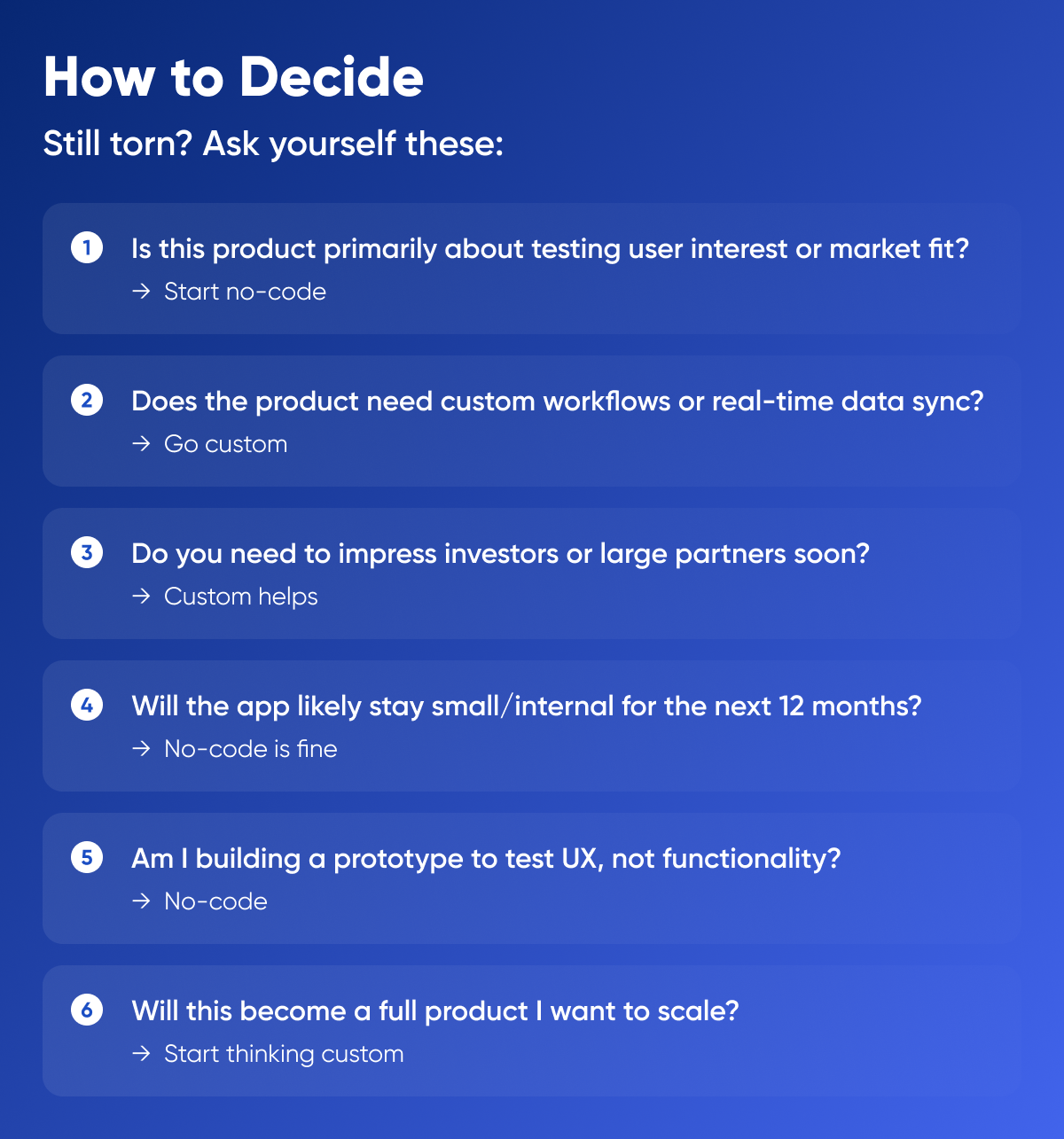You’re staring at a blank screen, full of big ideas and tight timelines. You want to build fast, learn fast, and get your MVP in front of real users. But before you touch a single tool, you’re forced to answer one of the most defining questions of early product development: Should I build this with no-code, or go full custom?
In 2025, the tools are better than ever. No-code platforms like Webflow, Bubble, and Glide promise fast iteration, beautiful UI, and zero engineering bottlenecks. On the flip side, custom development offers full control, infinite scalability, and a future-proof foundation.
At Movadex, we’ve helped dozens of startups make this call — and there’s no one-size-fits-all answer. The best choice depends on what you’re building, who you’re building it for, and how far ahead you’re thinking.
Let’s break it down.
What No-Code Really Gets You
No-code is exactly what it sounds like: a way to build software using visual tools instead of writing code. You drag, drop, connect, and publish — often in days, sometimes hours.
It’s ideal for founders who don’t have a dev team (yet), want to validate an idea quickly, or need to get internal tools live without pulling engineering resources.
Think of it like this: if you’re testing a business idea — not a product idea — no-code is probably your best friend. Landing pages, simple CRMs, portals, and prototypes? Knock them out with Webflow, Airtable, Zapier, and Softr.
But there’s a ceiling.
Where No-Code Starts to Break
No-code platforms trade flexibility for speed. And when your product starts needing edge-case logic, dynamic behavior, or real-time interactions, no-code can become a maze of workarounds and limitations.
Let’s say you’re building a product that relies on:
-
Complex user roles or permissions
-
Data that’s interrelated or needs live sync
-
External APIs that need custom formatting or caching
-
Customized billing flows, usage-based pricing, or metered data
...then you’ll quickly run into the boundaries of what no-code can gracefully handle. You’ll either burn time trying to force it to work — or start over in code.
When Custom Code is Worth It
Custom development shines when your product is the business. If the user experience, backend logic, and long-term performance are core to your differentiation, then custom is the right move.
Yes, it costs more up front. Yes, it takes longer to get right. But it gives you total freedom to build the product exactly as you envision — without bending your logic to match someone else’s framework.
Custom development also gives you access to better developer tooling, testing, and analytics. You can deploy feature flags, integrate complex data structures, run A/B tests, and adapt your product architecture as you scale.
If you’re looking to raise funding, investors also tend to prefer MVPs that are built on scalable tech foundations. It signals seriousness, clarity, and long-term vision.
The Hybrid Approach: No-Code + Custom Extensions
This is the secret sauce most teams don’t talk about. You don’t have to choose one or the other. Some of the best early-stage products are built using no-code for what’s stable — and custom for what’s unique.
You might:
-
Use Webflow for marketing and onboarding
-
Build your product core in React + Firebase
-
Connect both with tools like Make or Zapier
This lets you move fast on content and iteration, while keeping your actual product stack clean, performant, and scalable.
The key is knowing what parts of your app have to be custom — and what can safely live in a no-code tool.

This isn’t just about building. It’s about learning quickly, building strategically, and preserving momentum.
Final Thought: Build to Learn, Then Build to Last
No-code isn’t cheating. And custom code isn’t overkill. They’re tools — and your job is to pick the right one for what you need right now.
You’re not trying to win awards for your MVP. You’re trying to get something in users’ hands, learn from their behavior, and make better decisions for v2.
At Movadex, we help founders make that leap — from sketch to system, from prototype to platform. Whether you need a no-code launch, a custom engine, or something in between, we’ll help you build what makes the most sense — for your users, your team, and your future.
Build smarter. Launch faster. Learn continuously.




